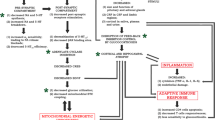Summary
Mesocortical dopamine (DA) neurons projecting to the prefrontal and cingulate cortices possess a faster basal firing rate and exhibit more bursting than other midbrain DA neurons. Thus, we examined whether tyrosine administration could preferentially affect DA synthesis in these DA neurons. Tyrosine administered at doses as low as 25 mg/kg significantly increased in vivo tyrosine hydroxylation in the prefrontal and cingulate cortices without affecting it in other mesocortical, mesolimbic, and nigrostriatal DA terminal fields examined. Further studies in the mesoprefrontal DA neurons showed that tyrosine administered at higher doses of 50 mg/kg initially enhanced tyrosine hydroxylation and elevated endogenous DA levels within 60 min. The resultant increases in DA levels appeared to feedback and normalize prefrontal tyrosine hydroxylase activity. The levels of DA metabolites in the prefrontal cortex were unaltered by doses of tyrosine from 25–200 mg/kg, suggesting that the functional transmitter outflow from these DA neurons is not normally affected by precursor administration under resting conditions. However, when these mesocortical DA neurons were pharmacologically activated following administration of the anxiogenic Β-carboline, FG 7142, tyrosine administration (25 mg/kg) was effective in increasing DA metabolite levels in the prefrontal cortex. These results thus suggest that enhanced activity of the mesoprefrontal DA neurons renders these DA neurons much more dependent up on tyrosine availability for maintenance of transmitter output.
Similar content being viewed by others
References
Bacopoulos NG, Hattox SE, Roth RH (1979) 3,4-Dihydroxyphenylacetic acid and homovanillic acid in rat plasma: possible indicators of central dopaminergic activity. Eur J Pharmacol 56: 225–236
Badawy AA-B, Williams DL (1982) Enhancement of rat brain catecholamine synthesis by administration of small doses of tyrosine and evidence for substrate inhibition of tyrosine hydroxylase activity by large doses of the amino acid. Biochem J 206: 165–168
Bannon MJ, Roth RH (1983) Pharmacology of mesocortical dopamine neurons. Pharmacol Rev 35: 53–68
Bannon MJ, Wolf ME, Roth RH (1983) Pharmacology of dopamine neurons innervating the prefrontal, cingulate and piriform cortices. Eur J Pharmacol 91: 119–125
Caliguri EJ, Capella P, Bottari L, Mefford IN (1985) High speed microbore liquid chromatography with electrochemical detection using 3-Μm C18 packing material. Anal Chem 57: 2423–2425
Chiodo LA, Bannon MJ, Grace AA, Roth RH, Bunney B (1984) Evidence for the absence of impulse-regulating somatodendritic and synthesis-modulating nerve terminal autoreceptors on subpopulations of mesocortical dopamine neurons. Neuroscience 12: 1–16
Edwards DJ, Sorisio D, Knopf S, Mujumdar S (1986) Assay for L-p-tyrosine in plasma and brain by column liquid chromatography with electrochemical detection using m-tyrosine as the internal standard. J Chromatogr 383: 142–147
Elsworth JD, Roth RH, Redmond DE (1983) Relative importance of 3-methoxy-4-hydroxy-phenylglycol and 3,4-dihydroxyphenylglycol as norepinephrine metabolites in rat, monkey, and humans. J Neurochem 41: 786–793
Emson PC, Koob GF (1978) The origin and distribution of dopamine-containing afferents to rat frontal cortex. Brain Res 142: 249–267
Fernstrom JD (1983) Role of precursor availability in control of monoamine biosynthesis in brain. Physiol Rev 63: 484–546
Galloway MP, Wolf ME, Roth RH (1986) Regulation of dopamine synthesis in the medial prefrontal cortex is mediated by release modulating autoreceptors: studies in vivo. J Pharmacol Exp Ther 236: 689–698
Gibson CJ, Wurtman RJ (1978) Physiological control of brain norepinephrine synthesis by brain tyrosine concentration. Life Sci 22: 1399–1406
Iuvone PM, Dunn AJ (1986) Tyrosine hydroxylase activation in mesocortical 3,4-dihydroxyphenylethylamine neurons following footshock. J Neurochem 47: 837–844
Lindvall OA, Bjorklund A, Divac I (1978) Organization of catecholamine neurons projecting to the frontal cortex in the rat. Brain Res 142: 1–24
Melamed E, Hefti F, Wurtman RJ (1980) Tyrosine administration increases striatal dopamine release in rats with partial nigrostriatal lesions. Proc Natl Acad Sci USA 77: 4305–4309
Milner JD, Wurtman RJ (1986) Catecholamine synthesis: physiological coupling to precursor supply. Biochem Pharmacol 35: 875–881
Morre MC, Hefti F, Wurtman RJ (1980) Regional tyrosine levels in rat brain after tyrosine administration. J Neural Transm 49: 45–50
Pycock CJ, Carter CJ, Kerwin RW (1980) Effect of 6-hydroxydopamine lesions of the medial prefrontal cortex on neurotransmitter systems in subcortical sites in the rat. J Neurochem 34: 91–99
Reinhard JF, Roth RH (1982) Noradrenergic modulation of serotonin synthesis and metabolism. I. Inhibition by clonidine in vivo. J Pharmacol Exp Ther 221: 541–546
Roth RH, Tam S-Y, Ida Y, Yang J-X, Deutch AY (1988) Stress and the meso-corticolimbic dopamine systems. Ann NY Acad Sci 537: 138–147
Scally MC, Ulus I, Wurtman RJ (1977) Brain tyrosine level controls striatal dopamine synthesis in haloperidol-treated rats. J Neural Transm 43: 103–108
Tam S-Y, Roth RH (1985) Selective increase in dopamine metabolism in the prefrontal cortex by the anxiogenic beta-carboline FG 7142. Biochem Pharmacol 34: 1595–1598
White FJ, Wang RY (1984) A 10 dopamine neurons: role of autoreceptors in determining firing rate and sensitivity to dopamine agonists. Life Sci: 1161–1170
Wurtman RJ, Hefti F, Melamed E (1981) Precursor control of neurotransmitter synthesis. Pharmacol Rev 32: 315–335
Author information
Authors and Affiliations
Rights and permissions
About this article
Cite this article
Tam, S.Y., Elsworth, J.D., Bradberry, C.W. et al. Mesocortical dopamine neurons: High basal firing frequency predicts tyrosine dependence of dopamine synthesis. J. Neural Transmission 81, 97–110 (1990). https://doi.org/10.1007/BF01245830
Received:
Accepted:
Issue Date:
DOI: https://doi.org/10.1007/BF01245830




